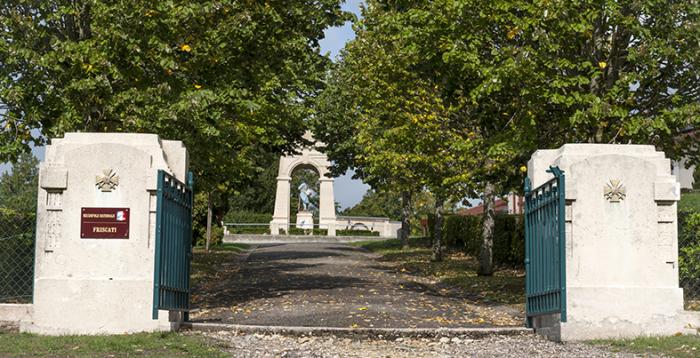
La nécropole nationale de Friscati. © ECPAD
Pour accéder au panneau d'information de la nécropole, cliquer ici 
Located at the so-called Mouton noir, the national war cemetery of Friscati contains the remains of soldiers killed during the fighting around Lunéville or those who died in military hospitals. It is built on the site of a temporary cemetery born from the initiative of a teacher from Lunéville, Marie-Marguerite Wibrotte. Containing 3,713 bodies, this cemetery is the largest of the three military cemeteries in Grand-Couronné de Nancy. Three ossuaries preserve the memory of 1,683 soldiers, while 2,026 rest in individual graves.
At the entrance of the cemetery, a triumphal arch was erected in 1927, topped by an infantryman perpetuating the memory of the defenders of Lunéville.
Two plaques are affixed to this monument. The first pays tribute to the 37 soldiers of the Light Infantry 2nd Battalion who fell at Vaucourt. The second is dedicated to the American soldiers of 1917-1918 and the French Forces of the Interior resistance fighters killed during World War II.
At the summit of the cemetery stands a monument erected in the memory of Marshal Lyautey. The Marshal's ashes, until they were transferred to Invalides in 1961, were kept at this site, close to the château de Crévic where he lived before the war.